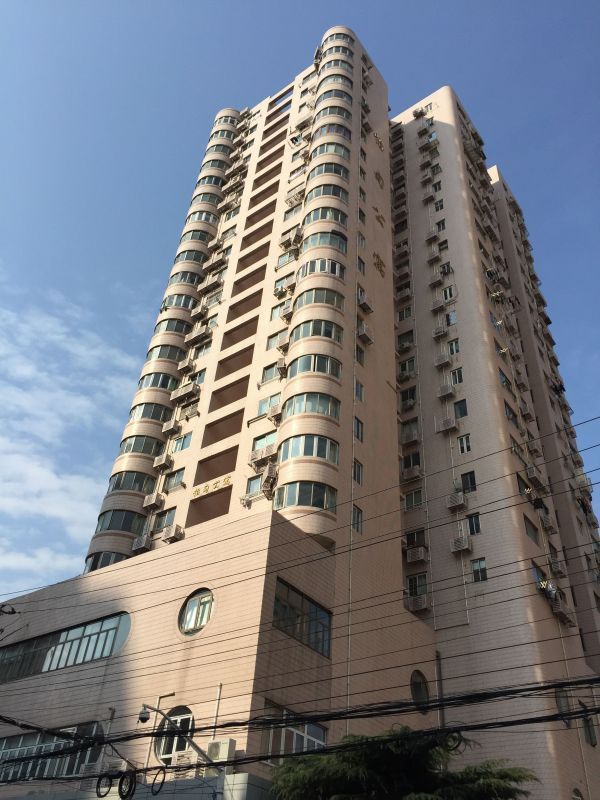Although Art Deco stopped being popular in the 1940s in Europe and America, the style remained in vogue much later in Asia. Examples of Art Deco architecture from the 1950s abound in Singapore, India, Indonesia and Burma among others. In Shanghai, it definitely stopped in the mid 40’s. The Chinese Liberation brought a change of style and Soviet-inspired Socialist-Realism became the norm, with rows of small four-to-six-storey concrete building designed to house families. As discussed in a previous post (See post “The Rise of Fako“, there has been recently a trend toward remodeling or new construction with the addition of Art Deco artifacts, mostly affecting the outside appearance. Art Deco buildings also had a strong influence on 1980s and 1990s buildings in Shanghai, the ones I call Frankenstein Art Deco.

The 1990s was the beginning of the new building boom in Shanghai that persists today. In those early days, the mood was not in massive destruction of the old buildings, as large chunks of the city center were not available to developers. Those new buildings were more often built on the remaining free spaces, mostly the gardens of grand villas in the old part of Shanghai. I imagine these space was already being used, but surely more in an unofficial way, so it was easier for developers to re-appropriate them. In these large spaces, local architects could build new towers using concrete building technologies not so far from the ones used in the 1930s. Buildings from the 1990s were often 20-30 storeys (that is, about the height of Park Hotel on people square), designed by local architects, before foreign architect firms arrived for Shanghai’s recent building boom.
These local architects must have been trained by masters that learned their craft before the 1949 revolution, and it shows in the building designs. As opposed to later apartment blocks, these buildings include light wells, just like 1930s buildings in Shanghai (See post “Brooklyn Court, Route des Soeurs“). Unlike today’s buildings, they were designed before the age of mass air conditioning, so they stuck to natural airflow just as Europeans had designed them in the 20s and the 30s. Another Art Deco element is the recurrent use of porthole round window (oeil de boeuf, or “bull’s eye”, as they are called in French), and rounded corners. One can also find integrated balconies (that have mostly now been turned into expanded rooms), as opposed to the protruding balconies that are today’s norm (which are also often closed off to supply extra space). Another interesting point is the use of old 1930s style iron-framed windows in many 1990s building. Shanghai continued to produce building materials and equipments that were practically unchanged from the 40s, including roof tile and electrical switches, well into the 1990s.
In many of these buildings, the link with Art Deco is as much in the outside shape, as with the inside decoration. Old Shanghai Art Deco designers often used terazzo and mosaics in their interiors; 1990s architects often used marble tiles that look quite similar, though much less imaginative.
In any case, Art Deco influences were evident in the 1990s, as architects employed consciously or unconsciously, the designs and techniques of their forefathers. Like many things in Shanghai (including cuisine, see post “Tasting of Old Shanghai”), Art Deco and other 1930s design elements survived through the 1950s and until the 1980s emerging in attenuated and distorted form in the 1990s in the “Frankenstein” version of Shanghai Art Deco.
2 thoughts on “Frankenstein Art Deco”